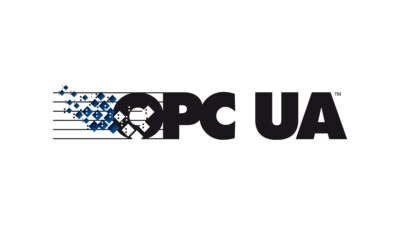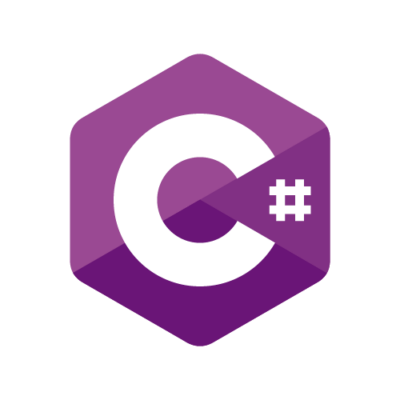This website uses cookies so that we can provide you with the best user experience possible. Cookie information is stored in your browser and performs functions such as recognising you when you return to our website and helping our team to understand which sections of the website you find most interesting and useful.

Client
Steinemann Technology AG is a global leader in manufacturing sanding machines for wood-based panels and UV coating systems for the printing industry. For over a century, the company has been delivering innovative solutions that drive progress in the manufacturing sector. Facing increasing operational and technological demands, Steinemann recognized the need to modernize its machine control system, which no longer met contemporary UX standards and limited production efficiency. The client was looking for a solution that would not only eliminate existing constraints but also lay the foundation for future digitalization and optimization of manufacturing processes.
Challenge
The project’s goal was to develop a new system for automating the sanding process. The new solution is needed to enhance production efficiency, increase modularity, reduce maintenance costs, and provide better quality control in a factory environment.
Steinemann approached us to help envision the future of its software and carry out the complete implementation of the new system according to best practices. The project was carried out in close collaboration with the client, enabling ongoing clarification of requirements, rapid risk communication, and co-creating optimal solutions.
Steinemann’s business is built on precision, efficiency, and repeatable results. However, the existing panel quality management system had become a barrier to further development.
Key problems included:
- Delayed sensor data processing: Machine and sensor data were processed synchronously with significant delays—changes in process parameters appeared on the interface with up to a 10-second lag. This made it impossible for operators to respond in real-time, which often resulted in product defects before issues could even be noticed on screen.
- Lack of remote access and monitoring limitations: The quality control system only ran locally on the machines, and the IT department couldn’t access the devices remotely. The absence of centralized access made troubleshooting difficult, and the lack of event logs hindered issue analysis.
- Complex user interface: Operators required lengthy training to use the system effectively, and its operation involved many manual steps.
- Difficult maintenance and development: Making changes or adding new features was time-consuming and costly. Modifying a single button could take several months. The system’s monolithic structure forced updates to the entire application, often introducing new bugs.
Steinemann needed a modern solution to improve operational efficiency, enhance operator experience, and enable easy system expansion in the future.
Solution
To meet the client’s expectations, we proposed building a new panel quality management system from scratch—designed with modern architecture, high data availability, and intuitive operation. Key architectural decisions included a modular, container-based approach (Docker) and seamless integration with Steinemann’s existing industrial infrastructure.
The new BQC Automation system was designed as a stable, reliable container-based solution that is easy to deploy and update across multiple machines. Thanks to containerization, future software updates can be delivered seamlessly (virtually without downtime), significantly reducing delivery times for fixes and new features compared to the old system.
System Architecture Based on OPC Connector
The OPC Connector is an intermediary module that communicates with machines and sensors on the shop floor. It collects real-time process data (e.g., roller speeds, power consumption, panel thickness), processes it, and, when needed, sends commands back to control devices. This enables a closed-loop control system—the software can automatically adjust machine parameters to maintain consistent product quality.
We developed a custom sanding quality control algorithm that dynamically adjusts machine load based on sensor data, preventing strain and ensuring consistent panel quality.
Thanks to the new architecture, all production data is now available instantly—we reduced parameter read delays to <100 ms, enabling real-time operation. The previous system refreshed data approximately every 10 seconds. This major improvement in responsiveness was made possible by separating a dedicated OPC connector—a standalone communication layer—which improved data transmission efficiency. In contrast, the old system had OPC embedded directly in the application code, resulting in poor performance.
New User Interface
We placed strong emphasis on redesigning the user interface. We aimed to create a user-friendly sanding quality management system for machine operators, boosting productivity and reducing operator errors.
We carried out a UX analysis of the existing system with the client and made several key design decisions:
- Simplified interface: The new application contains only essential functions. Screen layouts were redesigned to reduce cognitive load and improve navigation. Unnecessary steps and distracting information were eliminated.
- Intuitive operation: We applied modern UX/UI design patterns, making the system more intuitive and aligned with the expectations of users familiar with modern apps. Control elements are logically grouped, and alerts/messages are clearly worded—shortening onboarding time for new operators.
- Personalization and flexibility: The software is modular, allowing functions to be tailored to specific factory needs. Additional modules (add-ons) can be added without changing the core application.
Administrators can configure permissions and interface layouts for different user roles (e.g., operator, engineer, manager) so everyone sees only what they need.
The system also includes a web interface accessible via browser (Chrome, Firefox, Edge). It can be run on any computer or tablet within the factory network without the need to install dedicated software. The interface is responsive and optimized for harsh production environments (e.g., readable on large screens on the shop floor).
Built for a Broader Ecosystem
The system communicates not only with machines via OPC but also with external platforms such as the client’s Azure Cloud. Production data can be sent to the cloud, enabling remote monitoring, infrastructure scalability, and data analytics for ongoing optimization.
We also implemented robust safety and reliability mechanisms. The system includes a local data buffer in case of network failure. This ensures that machine operation and quality data collection continue uninterrupted, even during connectivity issues.
Proven 4D Methodology
Given the complexity of the project and the client’s business goals, we applied our proven 4D methodology (Discovery, Definition, Delivery, Direction), supported by Agile practices and Design Thinking techniques. This model enabled iterative results delivery with ongoing quality and risk control.
- In the Discovery phase, we focused on understanding user needs and challenges through workshops with Steinemann engineers, sanding process analysis, and a review of the existing quality control system.
- In the Definition phase, we refined the functional and non-functional requirements, created UX concepts, and designed the target system architecture. Rapid prototyping allowed us to validate key assumptions with the client early and introduce adjustments before implementation.
- In the Delivery phase, one of the biggest technical challenges was the integration of OPC with the machine. Developing a reliable connector required close cooperation between our developers and the client’s engineers. Ultimately, we achieved a stable, fast connection. Simultaneously, we fine-tuned the real-time sanding quality control algorithm, which was validated in actual production conditions. Our team visited the client’s factory twice for live testing. This confirmed the solution’s effectiveness and product quality improvements. The final two weeks were dedicated entirely to system testing—automated and manual—including user acceptance testing with future operators.
- Direction: After development, we conducted operator training and supported the system’s launch on the first production line. The new system was run in parallel with the existing one (as a pilot) for safe comparison. Operators praised the new interface as straightforward and easy to use, confirming our assumptions about reduced training time. For several weeks post-launch, we provided ongoing support, including remote system monitoring and quick user assistance. After the pilot ramp-up, the client decided to gradually implement the new quality control system across other machines and lines. Finally, we handed over complete post-implementation documentation and recommendations for further system development.
Results
The new system streamlined daily operator work and overall production process management.
- Steinemann saw a significant improvement in panel sanding efficiency and quality. Automated quality control allows the machine to continuously adjust parameters, leading to more uniform product quality and fewer rejects.
- Real-time insights: Operators instantly see key data and KPIs via clear dashboards. We eliminated data delay issues. Operational decisions can be made immediately, and the system generates automatic alerts upon detecting issues.
- User-friendly interface: New employee training time was reduced from several days to just a few hours.
- Modular design and role-based configuration enable better cross-department collaboration. Operators focus on their tasks, while process engineers and production managers access advanced analytics without interfering with operations.
- Unified environment: The centralized system replaced multiple fragmented stations. Instead of maintaining separate screens and computers per machine, a standard web terminal now suffices—reducing hardware and maintenance costs.
- Extended machine lifespan: Continuous monitoring and automatic load adjustments reduce the risk of damage due to improper settings.
The investment created a solid foundation for future improvements. Steinemann gained a modern platform ready for further expansion—such as advanced data analytics, predictive maintenance, or integration with other factory systems.
Technologies






Client

Design, Development, DevOps or Cloud – which team do you need to speed up work on your projects?
Chat with your consultation partners to see if we are a good match.






